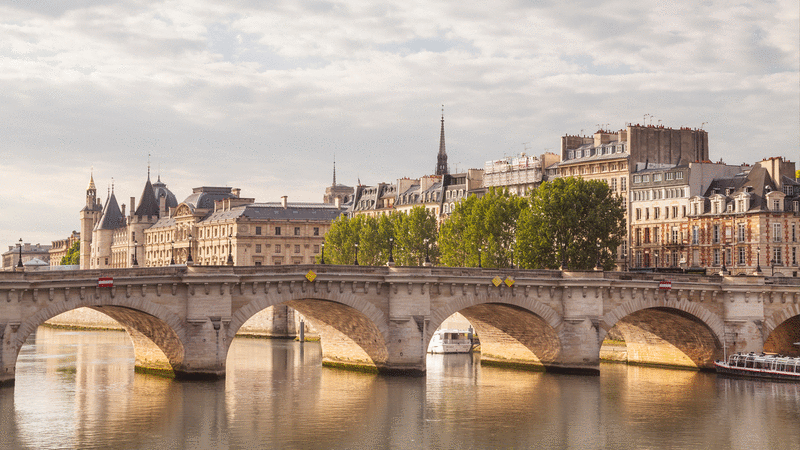Where To Eat & Drink In Kyoto: Sushi Master Miho Sato’s Guide
Miho Sato, the UK’s first and only woman sushi master, is the head chef at The Aubrey, the Japanese restaurant at the Mandarin Oriental hotel in London. Hailing from Ninohe, a city in northern Japan renowned for its spring water, sake and rice, Miho grew up surrounded by local produce, which fostered her love and appreciation for the environment.
In the late ’90s, Miho became one of just a few women to graduate with a Japan National Professional Cooking Sushi Certificate. It came after a decade of intense training, learning everything from delicate, precise knife skills to a mastery of both sushi rice and fish preparation. Fast forward 25 years of training, and she achieved the prestigious title of ‘sushi master.’ In the male-dominated world of sushi, this is a title her male counterparts often attain in just ten years.
In 2001, Miho relocated to London to further refine her skills. Roles in well-known establishments such as Oblix at The Shard and Annabel’s led to her being offered the position of head chef at The Aubrey. There, working solely with seasonal ingredients, Miho feels she can truly be creative with her menus.
Her goal is to showcase the beauty of traditional Japanese culture through her food, which is undeniably a work of art. One particularly beautiful place that holds a special place in Miho’s heart is Kyoto. Japan’s former capital city is steeped in history and tradition, which she first discovered during visits with her parents as a child. “It’s a place you learn lots about when you’re at school in Japan,” she says. Here, Miho shares her personal guide to Kyoto with Service95.

Miho Sato’s Guide To Kyoto
- The Locals’ Favourite Kyoto Spot – I never go to Kyoto without visiting Arashiyama. It’s a temple that you find on the side of a mountain, filled with shrines and a beautiful bamboo grove (which is what it has become well-known for). It’s like a fairytale; the air is so clean and the bamboo fortress that surrounds you is breathtaking. It’s a historic site that has been there for many years. It’s a little trip outside the centre of Kyoto, [but while you’re there, you can also visit] the Katsura Rikyū Imperial Villa, which [is an] inspiring [example of] Japanese architecture and garden design.
- The Best Casual Food In Kyoto – I love to eat somewhere that feels tranquil, and Hirobun is a special restaurant hidden underneath a bamboo awning, overlooking a flowing river with a mini waterfall. Some people say it’s nature’s aircon when you have the cool river breeze in the air like that. You can eat there and feel relaxed and refreshed, and these Kawadoko [traditional platform-style] restaurants are special to Kyoto. When I’m there, I order nagashi somen, which are very thin noodles served to ‘reflect’ the river: the restaurant has bamboo shoots filled with water, which run in front of you – you need to catch the noodles as they hurry through the water.
- For Traditional Japanese Food – Mishima Tei is set in a traditional townhouse in the historic part of Kyoto and has been going for over 150 years. They serve one of my favourite dishes: a Japanese hot pot dish called sukiyaki, which is a simmering broth in a very hot iron pot, where you dip in fresh ingredients and raw meats. Sometimes you also have a beaten egg on the side and put the hot, freshly cooked ingredients in the egg, which cooks it slightly.
- The Most Delicious Black Cod Miso – Ichinoden is a very special miso store that has a restaurant on the second floor. Its Saikyo miso makes the best black cod – the miso is specific to Kyoto, using a soy sauce that is aged in a barrel for some years before being mixed. This is where I go when I want to eat black cod miso.
- The After-Dinner Bar – Atlantis bar is where I see lots of young people in Kyoto go now. It’s by the Kamogawa river and it serves very good cocktails.
- Where You’ll Find The Freshest Cooking Ingredients – Nishiki Ichiba market is nearly 400 years old. You can buy literally anything from there, in particular a very good selection of vegetables that are all local to Kyoto, which you might struggle to find elsewhere. It’s always exciting to see so many unexpected ingredients when you wander down the narrow market streets.
- My Secret Pleasure – Starbucks Coffee in Kyoto, Ninenzaka. It’s the only Starbucks in Japan where you [enjoy your drink] in the traditional tea-house [setting]. I like to have matcha when I go there, and because of the tatami floors, which are very traditional, you have to take your shoes off when you go in.
- Where To Drink Sake – The Tamagawa Kinoshita Brewery is a favourite place of mine. They have been making saké since 1842. In fact, the saké is so beautiful that we have worked with them to create The Aubrey’s heirloom yamahai genshu – a red label saké that we will be launching very soon. What [the brewery is] known for is its ageing of saké, which is something you don’t see in many places.
- The Hotel To Book – I like to stay in Hiiragiya, because it’s a special hotel with lots of history. It has been visited by all kinds of artists and writers over the years and it’s very beautiful near the foot of Kyoto’s mountainous area.
- The Traditional Ryokan Stay – Tawaraya is another famous place to stay, where you can sleep in a very traditional way. It’s a ryokan (Japanese inn) and one of the best examples, which has been preserved for over 300 years. There are beautiful traditional arts and crafts in the hotel, which you can’t miss.
Pia Brynteson is Content Editor at Service95




